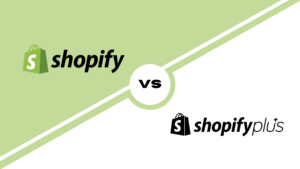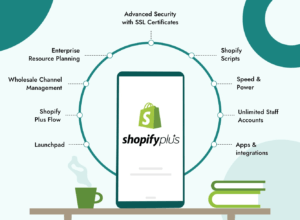As an ecommerce business owner, you know that attracting new customers is key to your success. But getting those customers can be expensive, and this cost is called the Customer Acquisition Cost, or CAC.
By understanding and managing your Customer Acquisition Cost, you can improve the profitability of your business and stay competitive in your industry.
In simple terms, Customer Acquisition Cost is the total amount of money you need to spend on marketing, advertising, and other efforts to attract new customers.
By lowering your Customer Acquisition Cost, you can increase your profitability, reinvest in marketing initiatives, and continue to grow your customer base over time.
From leveraging referral programs and content marketing to retargeting campaigns and website optimization, we will cover a range of techniques that can help you reduce your Customer Acquisition Cost and increase your ROI.
Referral Marketing
Referral marketing is a strategy that involves leveraging existing customers to promote and recommend a product or service to their friends, family, and acquaintances.
It relies on the power of word-of-mouth recommendations and utilizes the trust and credibility that customers have already established with their network.
Referral marketing works by incentivizing existing customers to refer new customers to the business. These incentives can come in various forms: discounts, exclusive offers, cash rewards, loyalty points, or even free products or services.
By providing an incentive, businesses encourage their customers to promote their products or services actively, expanding their customer base and driving growth. To incentivize existing customers for referrals, businesses can implement the following strategies:
- Rewards Programs: Create a structured referral program that rewards customers for successful referrals. This can involve offering discounts, cash rewards, or other incentives when a referred customer makes a purchase or signs up for a service.
- Exclusive Benefits: Provide exclusive benefits to customers who refer others, such as access to VIP events, early access to new products or features, or special discounts on future purchases.
- Social Recognition: Acknowledge and showcase customers who provide successful referrals publicly. This can be done through social media shout-outs, customer testimonials, or featuring them on the business’s website or newsletters.
- Gamification: Make the referral process fun and engaging by introducing gamification elements. For example, customers can earn points, badges, or levels for each successful referral, creating a sense of achievement and competition.
Referral marketing offers several benefits, including reducing Customer Acquisition Cost (CAC) for businesses.
Here’s how:
- Cost-Effective Customer Acquisition: Referral marketing taps into the existing customer base, effectively reducing the need for expensive advertising and marketing campaigns. By leveraging satisfied customers who are willing to refer others, businesses can acquire new customers at a lower cost.
- Increased Trust and Credibility: Referrals are often received with a higher level of trust and credibility compared to traditional advertising. People are more likely to trust recommendations from friends or family, leading to higher conversion rates and lower acquisition costs.
- Targeted Audience: Referral marketing relies on existing customers referring others who are likely to have similar interests and needs. This results in a more targeted audience, increasing the chances of acquiring customers who are genuinely interested in the product or service being offered.
- Higher Customer Lifetime Value: Customers acquired through referrals tend to have a higher lifetime value. They are more likely to be loyal, make repeat purchases, and refer others themselves, creating a positive cycle of customer acquisition and retention.
By implementing a well-designed referral marketing program and providing attractive incentives, businesses can harness the power of their existing customer base and significantly reduce their Customer Acquisition Cost while driving organic growth.
Content Marketing
Content marketing is a strategic marketing approach that focuses on creating and distributing valuable, relevant, and consistent content to attract and retain a clearly defined audience. It involves delivering informative, entertaining, or educational content through various channels such as blog posts, articles, videos, podcasts, social media, and more.
The goal of content marketing is to establish brand authority, build trust with the audience, and ultimately drive profitable customer action.
To produce engaging content, ecommerce businesses can employ several strategies:
- Understanding the target audience: Conduct thorough market research to identify the needs, interests, and pain points of your target audience. Tailor your content to resonate with their preferences and address their challenges.
- Creating compelling and unique content: Develop content that is informative, valuable, and differentiates your brand from the competition. Use storytelling, visuals, and interactive elements to make your content more engaging and memorable.
- Utilizing various content formats: Experiment with different types of content such as blog posts, videos, infographics, podcasts, and ebooks. Incorporate a mix of formats to cater to different learning styles and preferences.
- Encouraging user-generated content: Leverage the power of user-generated content by encouraging customers to share their experiences, reviews, and testimonials. This not only boosts engagement but also provides social proof for potential customers.
To optimize your content for search engines, consider the following strategies:
- Keyword research: Conduct thorough keyword research to identify relevant search terms that align with your target audience’s search intent. Incorporate these keywords naturally into your content to improve search engine visibility.
- Creating high-quality, SEO-friendly content: Focus on creating valuable content that addresses specific queries or solves problems for your target audience. To enhance readability, structure your content with headings, subheadings, and bullet points. Optimize title tags, meta descriptions, and image alt tags with relevant keywords.
- Building backlinks: Develop a link-building strategy to improve your website’s authority and search engine rankings. Seek opportunities for guest blogging, partner collaborations, and other methods to earn quality backlinks.
Now, let’s explore the impact of content marketing on Customer Acquisition Cost:
Content marketing can significantly impact Customer Acquisition Costs in several ways:
- Increased organic traffic: By creating valuable content optimized for search engines, you can improve your website’s organic visibility. This leads to a higher influx of qualified traffic, reducing dependence on paid advertising and lowering CAC.
- Improved conversion rates: Engaging and informative content establishes trust and credibility with your audience. By providing valuable information and solutions, you can nurture leads and improve conversion rates, resulting in a more cost-effective customer acquisition process.
- Enhanced brand loyalty: Consistent content marketing efforts help build a loyal customer base. By consistently providing value and staying top-of-mind with your audience, you can increase customer retention and reduce the need for expensive customer re-acquisition.
By implementing a robust content marketing strategy, ecommerce businesses can effectively reduce their Customer Acquisition Cost while strengthening their brand, attracting qualified traffic, improving conversion rates, and fostering long-term customer relationships.
Influencer Marketing

Influencer marketing is a popular strategy that involves partnering with individuals who have a strong influence and following within a specific niche or industry.
These influencers, typically social media personalities or bloggers, have built a dedicated and engaged audience who trust their opinions and recommendations.
By collaborating with influencers, ecommerce businesses can leverage their reach and credibility to promote their products or services.
You can also explore other forms of word of mouth marketing to reduce CAC, as explained in the video below.
Whether it’s through sponsored posts, product reviews, or affiliate partnerships, influencer marketing can be an effective way to increase brand exposure, drive traffic, and acquire new customers.
Benefits of partnering with relevant influencers
Partnering with relevant influencers can offer numerous benefits for ecommerce businesses, including:
- Increased brand visibility: Influencers have a dedicated following that values their opinions. By partnering with influencers who align with your target audience and brand values, you can reach a wider and more targeted audience, increasing brand visibility and awareness.
- Trust and credibility: Influencers have built trust with their audience over time. When they endorse your products or services, their followers are more likely to trust their recommendations, leading to higher conversion rates and lower acquisition costs.
- Targeted reach: Influencers typically have a niche-specific audience, allowing you to target a specific segment of your target market more effectively. This ensures that your marketing efforts reach people more likely to be interested in your offerings, resulting in higher-quality leads.
Influencer discovery and selection process
Finding and selecting the right influencers for your influencer marketing campaigns requires careful research and consideration. Here’s a step-by-step process to help you with the influencer discovery and selection process:
- Define your goals: Determine the objectives and goals of your influencer marketing campaign. Are you looking to drive sales, increase brand awareness, or promote a specific product? Clearly defining your goals will help you identify the influencers who can help you achieve them.
- Audience research: Conduct thorough audience research to understand your target market and their preferences. Look for influencers whose audience demographics and interests align with your target audience.
- Identify relevant influencers: Use tools like social media platforms, influencer marketing platforms, and industry databases to find influencers in your niche. Look for influencers with a strong engagement rate, relevant content, and a genuine connection with their audience.
- Evaluate influencer metrics: Consider factors like follower count, engagement rate, content quality, authenticity, and relevance. Analyze the influencer’s past collaborations and check their audience’s response to gauge their effectiveness.
- Reach out and establish a partnership: Once you have identified potential influencers, reach out to them to discuss collaboration opportunities. Clearly communicate your expectations, campaign details, and compensation terms. Building a genuine relationship with the influencer can lead to more successful partnerships.
Calculating ROI and cost-effectiveness of influencer marketing
Calculating the return on investment (ROI) and cost-effectiveness of influencer marketing campaigns can help ecommerce businesses determine the effectiveness of their collaborations. Here are some key metrics to consider:
- Engagement metrics: Monitor the engagement rate of influencer posts, such as likes, comments, shares, and click-through rates. Higher engagement indicates that the influencer’s audience is actively interacting with the content and may lead to higher conversions.
- Website traffic: Track the increase in website traffic during and after the influencer campaign. Compare the traffic generated from the influencer’s promotion to your average traffic to assess the impact of the collaboration.
- Conversion tracking: Implement conversion tracking mechanisms like affiliate tracking links or promo codes to measure the number of sales or conversions attributed to the influencer’s promotion. This helps determine the direct impact on revenue and customer acquisition.
- Brand sentiment: Monitor online conversations, social media mentions, and customer feedback during and after the influencer campaign. Positive sentiment and increased brand mentions indicate a successful collaboration.
Incorporating influencer marketing into your customer acquisition strategy can be a powerful tool for driving brand awareness, increasing credibility, and acquiring new customers.
Through careful selection of the right influencers and measuring their impact, ecommerce businesses can effectively reduce their Customer Acquisition Cost (CAC) and achieve their marketing goals.
One effective way to measure the impact of influencer marketing is by analyzing relevant metrics and comparing them to the costs incurred during the influencer campaign.
By doing this, you can make informed decisions about future collaborations and optimize your influencer marketing strategies for maximum impact and cost efficiency.
This enables you to calculate your campaign’s Return on Investment (ROI) and cost-effectiveness.
With careful planning, selection, and measurement of influencers’ impact and cost-effectiveness, businesses can significantly reduce CAC, improve brand awareness, and acquire new customers.
Website Optimization
Importance of website optimization for reducing CAC
Website optimization plays a critical role in lowering Customer Acquisition Cost (CAC) by ensuring that your site provides a positive user experience that leads to higher engagement, lower bounce rates, and increased conversions.
A poorly optimized website can lead to a discouraging user experience, driving potential customers away and increasing your Customer Acquisition Cost. By optimizing your website, you can maximize its effectiveness, attract and retain more visitors, and ultimately reduce your CAC.
Strategies for improving website speed and user experience
Here are some strategies for improving website speed and user experience:
- Mobile optimization: Optimize your website for mobile devices and ensure that it is responsive and fast. With more than half of all internet traffic coming from mobile devices, providing a mobile-friendly experience is critical for your site to be easily accessed and navigated.
- Page speed optimization: Optimize your website’s page speed to reduce loading times, improve user experience, and ultimately drive more conversions. Use tools like Google’s PageSpeed Insights to identify and fix any issues that may be slowing down your site.
- Simple design and navigation: Use a simple and intuitive design that allows users to navigate through your website’s content easily. Reduce clutter, make sure your site’s sections are clearly labeled, and ensure that your call-to-action (CTA) buttons are easy to find and engage with.
- Reduce form fields: Simplify the registration or checkout process by reducing the number of form fields. This reduces friction and encourages visitors to complete purchases or sign-ups, leading to increased conversions.
Implementing customer segmentation for personalized marketing
Customer segmentation involves dividing your target audience into specific groups based on common traits such as demographics, behavior, or interests.
By segmenting your audience, you can create personalized marketing campaigns that address each segment’s specific needs, preferences, and pain points. This personalized marketing approach can lead to higher engagement, conversions, and customer loyalty, ultimately reducing Customer Acquisition Cost.
Some strategies for implementing customer segmentation include:
- Behavioral targeting: Use website tracking tools to analyze user behavior, such as page views, time spent on the site, and the content they engage with. Use this information to create targeted messaging and campaigns that resonate with their specific interests and behaviors.
- Demographic targeting: Group customers based on demographic data, such as age, gender, location, or income. Use this information to craft messaging and campaigns that target specific groups with relevant offers and messages based on their unique characteristics.
- Lifecycle marketing: Segment customers based on where they are in the customer journey, such as new visitors, repeat customers, or dormant users. Use this information to create campaigns that address specific customer needs and encourage them to move through the funnel.
Analyzing and optimizing website performance
Analyzing and optimizing website performance is critical to reducing Customer Acquisition Cost and driving results. Here are some ways to measure and optimize your website’s performance:
- Conversion tracking: Use conversion tracking tools to measure the effectiveness of your website in driving conversions. This will help you identify problem areas and make necessary changes to improve conversion rates.
- A/B testing: Conduct A/B testing on various aspects of your website, such as page design, messaging, and CTAs, to determine which elements drive higher engagement and conversions. This will help you make data-driven decisions to optimize your website’s performance.
- Website analytics: Use website analytics tools like Google Analytics to track website traffic, user behavior, and other metrics. Analyze this data to identify trends and optimize your website’s performance to drive higher engagement and conversions.
By implementing website optimization strategies, such as improving website speed, simplifying design and navigation, implementing customer segmentation, and regularly analyzing and optimizing performance, you can optimize your website for success, drive higher engagement and conversions, and ultimately reduce your Customer Acquisition Cost (CAC).
Final Thoughts
If you’re looking to lower your Customer Acquisition Cost (CAC) in ecommerce, here are some key strategies to consider:
- Retargeting: Utilize retargeting campaigns to reconnect with potential customers who have already shown interest in your products or brand. You can increase conversions and make the most of your ad spend by delivering targeted ads to this audience.
- Website Optimization: Improve your website’s speed and user experience to reduce bounce rates and boost conversions. Make sure your site is mobile-friendly, optimize its loading speed, and create a simple and easy-to-navigate design.
- Customer Segmentation: Divide your customers into different groups based on their characteristics and behaviors. This allows you to create personalized marketing campaigns catering to each segment’s needs, driving higher engagement and conversions.
It’s important to be strategic in your marketing approach and invest in cost-effective channels. Take the time to determine which channels are the most effective for reaching your target audience and focus your efforts there.
Doing so can optimize your marketing spend and lower your Customer Acquisition Cost.
Lowering your CAC can significantly impact your profitability and revenue growth.
By reducing the cost of acquiring customers, you can allocate more resources towards other areas of your business, such as product development and customer retention.
This, in turn, can lead to increased profitability and sustainable revenue growth over time.
If you’re interested in learning more about our services and how we can assist you in lowering your CAC, improving profitability, and driving revenue growth, please feel free to contact us here. Take action today and watch your business thrive!



